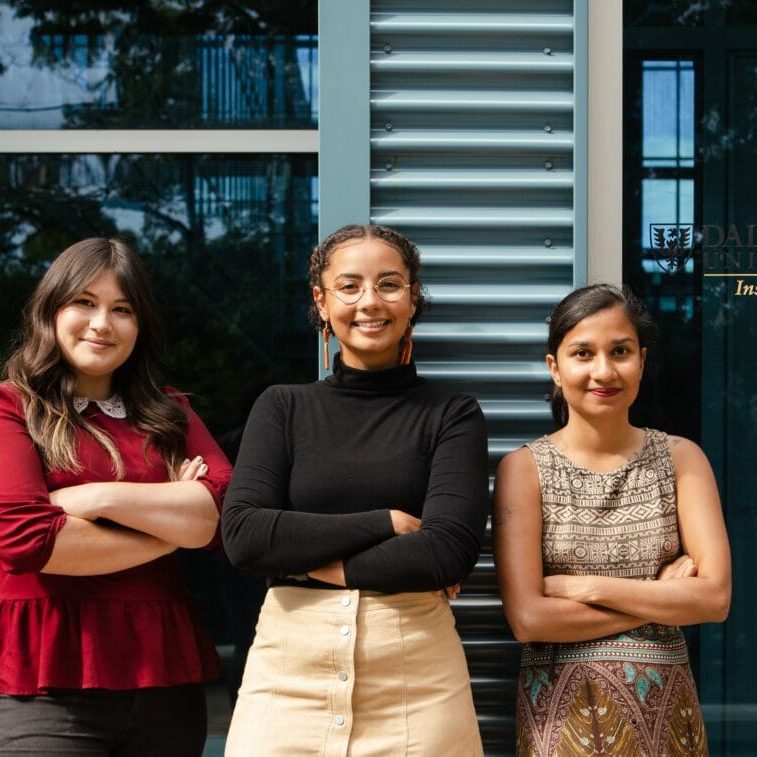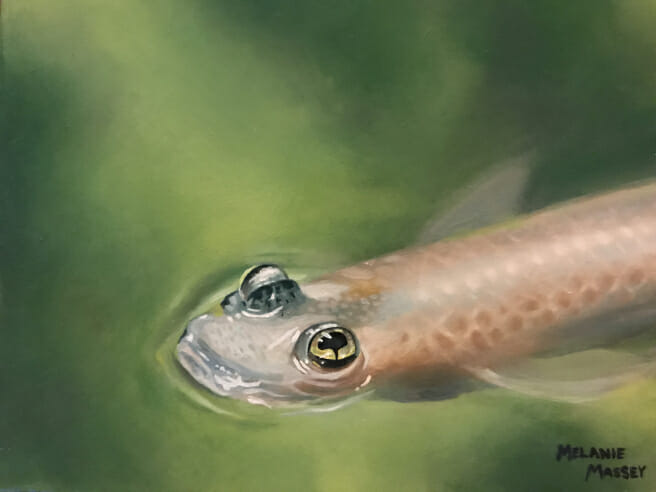
BIPOC share their love of ecology
Dal grad students launch secondary school program to provide ecology field experience
In early June, two Dalhousie University graduate students were walking their dogs. Melanie Duc Bo Massey and Suchinta Arif were thinking of ways they could help combat institutional racism.
The Black Lives Matter protest movement was at its highest level at the time after George Floyd and Breonna Taylor were murdered by police.
As Massey and Arif walked, the PhD candidates discussed the systemic issues within their own field of scientific academia where, as racialized students, they’ve often felt isolated amongst white peers and professors. An hour later, as Massey and Arif’s dogs tugged for more walking and their respective partners pleaded to go home, Diversity of Nature was born: a program where scientists, who are Black, Indigenous and People of Colour (BIPOC), help racialized secondary students become interested in science.
Funding the project
Diversity of Nature is currently led by Massey, Arif and Catalina Albury. Albury, who is a master’s of science candidate at Dal, joined the team soon after the initial dog-walking brainstorm.
“There was a need for this program and we wanted leadership from BIPOC individuals, and obviously, that’s not going to happen at a higher-up level because most professors are not BIPOC. So it needed to kind of come from this middle area,” Arif said. “In an ideal world, there wouldn’t be a need for this program. But given where we are at today, we definitely saw a need.”
Three months later, the project has hit its crowdfunding goal of $12,500, which unlocks another $37,500 in funding from the Marine Environmental Observation, Prediction and Response Network’s (MEOPAR) Fathom Fund: a federally funded program that allows the community to decide if a project should be awarded funding by having researchers crowdfund 25 per cent of their costs.
MEOPAR became aware of Diversity of Nature when one of Arif’s friends, a professor at Memorial University of Newfoundland, tweeted at MEOPAR about it.
“I just think it was a no brainer,” said Allison Saunders, the communications and marketing manager at MEOPAR. “With everything that has been happening across the world, across North America in the last few months, people really connected with this immediately.”
Once fully funded, the program will take two forms: traditional classroom workshops, and a four-day overnight fieldtrip where students will complete workshops in coastal ecosystems, bird identification and more. The team has two classroom workshops planned: one to help BIPOC students apply to universities and STEM (science, technology, engineering and mathematics) programs specifically, and another in scientific illustration targeted toward younger students.
“The purpose of this program is really us taking a field that we are in and working to make it more actively anti-racist,” Albury said.
The field-trip portion is currently planned for August 2021 and the group is hoping to begin the in-school workshops this winter.
BIPOC leadership is essential
“When I was growing up, I went to a BIPOC heavy school, which had a lot of value, and as I became more successful and as I climbed the academic ladder, it just became more and more white,” said Arif. “At first I was proud of that. I was like, ‘Oh, look at me, I’m the only person of colour here. It must mean that I’m at a certain successful level.’ But even that understanding of it –– this is like when I was much younger –– is very skewed and very wrong,” Arif said.

Massey, Arif and Albury all agree that for young BIPOC students to develop an interest in science, they need leaders who are reflections of themselves. This is equally important beyond the introductory level. BIPOC leadership is crucial to keeping BIPOC students in science programs when they reach higher levels of academia, they said.
“There have been times where I’ve experienced racism from mentors in STEM. There have been times where I’ve been made extremely uncomfortable by my peers or my mentors,” said Massey, who recalls once leaving a field research site to visit her family home in Toronto’s East Chinatown. When she returned to the field, she brought with her some mangoes and lychee fruit, “and my co-workers were like, ‘What are these?’ Like they’d never seen them before.”
While facing microaggressions like these, Albury said, BIPOC students are unfairly forced to assess the validity of their feelings.
“It’s hard to know whether you can speak up or not because you have no one to relate to you. You sort of second guess yourself. You go like, ‘Am I being too sensitive right now? Is this a real, actual issue, or is it just in my head?’ And that’s the nature of a microaggression,” she said.
According to Asif, Massey and Albury, a large part of helping BIPOC students become involved in STEM is helping them navigate the university application process.
Many BIPOC students struggle to apply to undergraduate and graduate programs, Massey said. When students have made it past the application process and set foot on campus, many struggle to become involved, unaware of when they should be volunteering or beginning lab work.
“[BIPOC students] don’t [always] have family members who went to university recently, or we don’t have that mentorship necessarily coming from an academic sphere,” Massey said.
“My parents are always asking me like, ‘What’s the letter for the next thing that you’re going to do? Is it a PhD?’” Albury said. “I have to describe what’s happening, because they really don’t [know]. That’s not a part of their world.”
The program leaders of the university application workshop won’t just be volunteering in a teaching capacity. They’ll also be mentors who students can reach out to during the entire process.
Because of the lack of BIPOC in the sciences, Arif said racialized students are forced to figure out their interests by themselves.
“For me, when I decided to go into biology in Grade 12. That took a lot of introspection for me to figure out that was the right path for me. If I had a program like this, that was localized, that was available to me during high school, I would have realized that much easier,” Arif said.
Making science more inclusive
During the four-day overnight trip, students will be introduced to organisms and perspectives they won’t encounter at school. This will be done by practicing two-eyed seeing and studying decolonized science.
Two-eyed seeing refers to examining something using both the strengths of Indigenous knowledge and Western knowledge. The term was created by Mi’kmaw Elder Albert Marshall.

Diversity of Nature plans on hiring Mi’kmaw scientists to lead workshops on Mi’kmaw science and scientific thought.
“Objectivity is kind of impossible in a field where humans control what we study,” Albury said. “A field can’t be very objective if only one kind of person is the person doing the science.”
“One of the perspectives is our colonial or settler science, the scientific method, that sort of stuff. And the other perspective is Indigenous science and understanding that the land is for everyone and that we are also a part of the land and that everything is connected,” Albury said.
Looking at science while practicing two-eyed seeing will also be new for the leaders of Diversity of Nature.
“I’ve only ever been introduced to Western science,” said Massey. “So in part of training for this camp, I have to learn a lot more about [Indigenous science] and I’m excited to be learning from Indigenous ecologists about what that is and let them take the lead.”
Community impact
Massey spent time working as a high school biology teacher while completing her PhD at Dal, so she knows an opportunity like this for students is something teachers and principals are on the lookout for.
The group is hopeful students will return to their communities with an excitement to share what they learned from the trip, and to engage in the environment with friends and family.
Once Diversity of Nature finishes its first year, the trio will survey participants and publish their results. This will include the effectiveness of intersectional marine science education and the effect of BIPOC programs on youths’ perceptions of BIPOC scientists.
“We’re hoping that it can inform other initiatives like this. It would be really lovely to see that this is a successful program,” Massey said.
Albury, Arif and Massey are open to feedback and criticism from communities or parents who are interested in the program.






